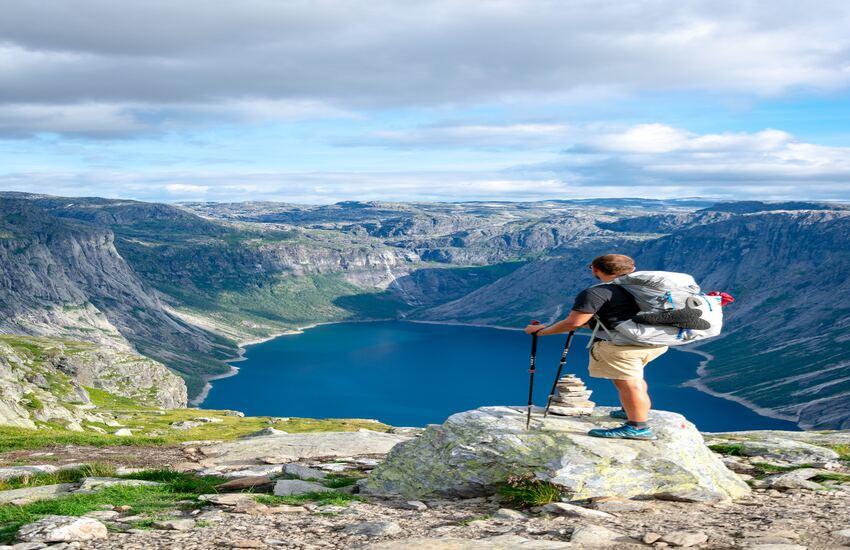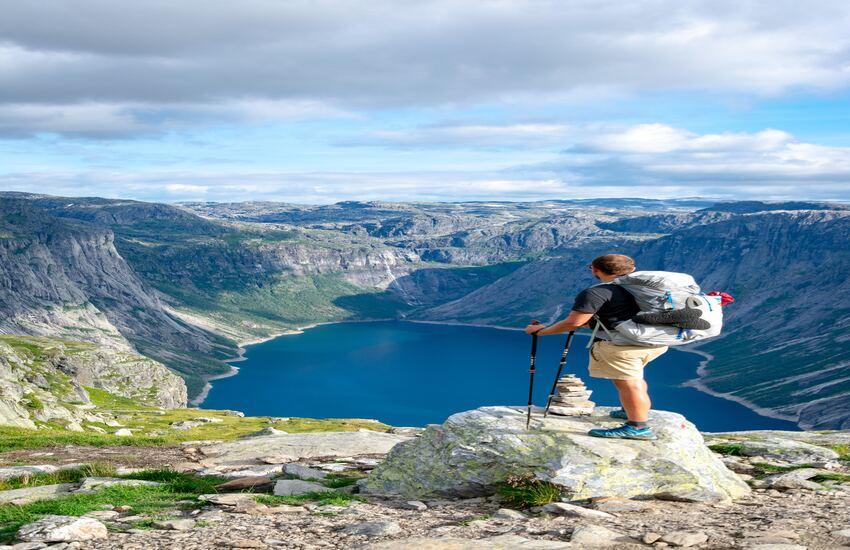If you’re an adventurer at heart and seek the thrill of the great outdoors, trekking and hiking might just be the perfect activities for you. These exhilarating pursuits not only provide an opportunity to connect with nature but also offer a chance to challenge yourself physically and mentally. From lush forests to towering mountains, It allows you to explore everything that the natural world has to offer.

Trekking and Hiking Overview
Trekking and Hiking are both outdoor activities that involve walking in nature. However, there are some key differences between the two.
- Compared to trekking, hiking is typically quicker and easier. From woodland regions to mountains, there are many different kinds of hiking trails, and they are usually well-maintained and properly signposted. However, trekking paths are frequently more difficult and remote, and trekkers might need to bring their own equipment.
- Hiking typically lasts one day, unlike trekking, which sometimes lasts several days or even weeks. A trekker frequently travels with their whole arsenal of equipment in a backpack, including food, water, clothes, shelter, and first aid supplies. Daypacks for hikers frequently contain food, drink, and other necessities.
- Hiking is typically done in groups, although trekking may be done either alone or in groups. Hikers may either go off on their own or sign up for a guided trek. Trekkers, on the other hand, can choose to trek either by themselves or in a small group with more experienced hikers.
Things you need to do to Prepare
- Choose the right trail: Make sure to choose a trail that is appropriate for your fitness level and experience.
- Wear the right gear: Make sure to wear comfortable shoes or boots, sturdy clothing, and sunscreen.
- Bring plenty of water and food: It is important to stay hydrated and fueled while hiking or trekking.
- Tell someone where you are going: Let someone know where you are going and when you expect to be back.
Safety Tips for Trekking and Hiking
- Be aware of your surroundings: Pay attention to the terrain, the weather, and the wildlife.
- Let someone know where you are going: This is especially important if you are hiking or trekking alone.
- Carry a map and compass: This will help you stay on track if you get lost.
- Have a first-aid kit: This is essential in case of an injury.
- Be prepared for the weather: Dress in layers and bring rain gear.
- Let someone know when you are back: This will let them know that you are safe.
Benefits of Trekking and Hiking
- Improved physical fitness Trekking and hiking are excellent exercises that can help your heart health.
- Spending time in nature has been demonstrated to lower stress and anxiety levels.
- Enhanced mood It can support an uptick in your disposition and general sense of well-being.
- Meet new people Hiking and trekking are fantastic methods to get to know others who have hobbies similar to your own.
- Discover new places Hiking and trekking may take you to some of the most stunning and inaccessible locations on Earth.
Trekking and Hiking Itinerary
Here are some popular trekking and hiking itineraries in India:
1. Kerala Backwaters Trek: This 4-day trek takes you through the lush green backwaters of Kerala, where you can go kayaking, canoeing, and bird-watching.
2. Himachal Pradesh Trekking: Himachal Pradesh is home to some of the most beautiful trekking trails in India, including the Triund Trek, the Chandratal Lake Trek, and the Hampta Pass Trek.
3. Ladakh Trekking: Ladakh is a high-altitude desert region with stunning mountain scenery. Popular trekking trails in Ladakh include the Markha Valley Trek, the Roopkund Trek, and the Chadar Trek.
4. Sikkim Trekking: Sikkim is known for its pristine alpine forests and snow-capped mountains. Popular trekking trails in Sikkim include the Goecha La Trek, the Sandakphu Trek, and the Yumthang Valley Trek.
Additional Tips for Planning
- Hire a guide who can help you choose the right route, negotiate the terrain, and minimize any hazards.
- It’s crucial to make your overnight reservations in advance, especially if you’re hiking in a popular area and during a busy tourist period.
- Get the required permits Before you begin your hike, make sure to obtain the permissions that are essential for the specific paths.
- Packing should take into account the weather because it might change quickly in India.
- Bring a lot of food and water because it’s important to stay hydrated and fed while hiking or climbing.
- Tell someone where you are going and when you intend to return.

Leave a Reply